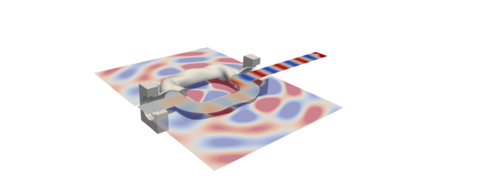Aeroacoustics and Vibroacoustics
The fundamental physical phenomena of coupling between flow instabilities, turbulence, structural vibrations, absorption surfaces and sound radiation are investigated. The research approach combines classical theoretical analysis tools with validated workflows (including acoustic analogies and stochastic models) and numerical simulations such as Large-Eddy-Simulations (LES), hybrid aeroacoustic predictions or direct numerical simulations (DNS) of the flow and sound field.

Computer models form the basis for a high-resolution insight into physics in order to understand fundamental phenomena, validate theories and improve technical systems.
